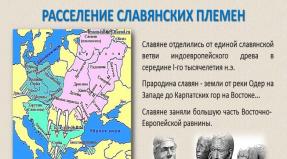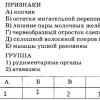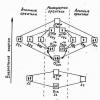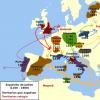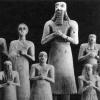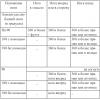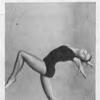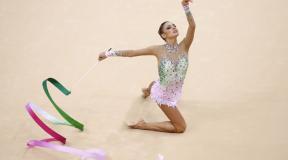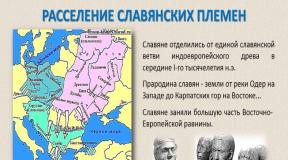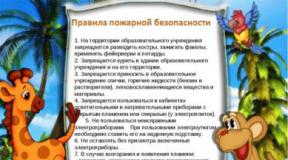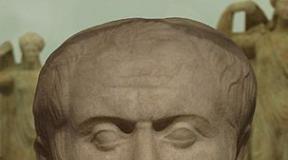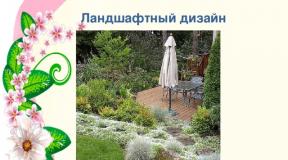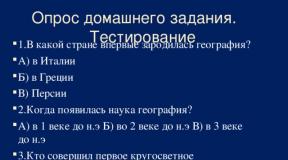Causes of the Renaissance. Shaitanov I. Renaissance humanism Representatives of Renaissance humanism in philosophy
100 RUR bonus for first order
Select the type of work Diploma work Course work Abstract Master's thesis Practice report Article Report Review Test work Monograph Problem solving Business plan Answers to questions Creative work Essay Drawing Essays Translation Presentations Typing Other Increasing the uniqueness of the text Master's thesis Laboratory work On-line help
Find out the price
Historiographical meaning of the term "Renaissance"
"Renaissance" is a term that came into use as a historiographical category in the 19th century, largely thanks to the work of the German historian Jacob Burckhardt (Burkhardt) "The Culture of the Renaissance in Italy" (1860), which has long served as a model and indispensable guide to the topic of the Renaissance . In Burckhardt's work, the Renaissance appeared as a refined Italian phenomenon, characterized by individualism, the cult of secular life with emphasized sensuality, the secular spirit of religion with a tendency towards paganism, liberation from the power of authorities that in the past dominated spiritual life, special attention to history, naturalism in philosophy and an extraordinary taste for the arts. The Renaissance, according to Burckhard, was not defined solely by the resurrection of antiquity - it was the era of the birth of a new culture, opposite to the medieval culture. When starting to talk about the Renaissance, one must remember that “Renaissance”, “Renaissance” is a later name for the era after the brightest flower in culture, but the era was by no means exhausted by this flower.
Origin of the term "humanism". The origin of the term “humanism” is associated with the concept of studia humanitatis - literally, “humanitarian studies” (disciplines). So starting from the 14th century. denoted a complex of academic disciplines, which included grammar, rhetoric, poetry, history, and ethics. The revival was associated with the study of precisely these disciplines, since their study has long been based on acquaintance with ancient authors. However, teachers of these disciplines began to be called “humanists” only at the beginning of the 19th century in Germany, when there was an educational reform with an emphasis on the study of humanities and, above all, ancient languages. In the 16th century, the term “humanists” was not used; such people were called poets or orators. But in the future we will adhere to the historiographical tradition and use the term “humanists”. The humanists of the Renaissance saw in “humanitarian studies” not just some disciplines involved in the study of man, but most importantly, a means of development and elevation of man. If other academic subjects are designed to form practical skills in mastering a certain profession, then the humanities are engaged in the upbringing and education of a person, the formation of humanity in a person.
The aesthetic basis of humanism.
By “human,” humanists began to understand a set of qualities that require special training for their formation. Among them: sophistication of taste, beauty of speech, sophisticated attitude to life, the ability to evoke reciprocal sympathy. At the same time, the understanding of the human had a clear aesthetic orientation. Renaissance humanism is primarily an aesthetic phenomenon. This should always be kept in mind for the reason that humanism in the Russian tradition is often associated not with an aesthetic, but with a moral and ethical orientation. In the Russian and Soviet traditions, the concept of humanism is sometimes interpreted in the sense of protecting the weak, mercy and compassion. The humanism of the Western European Renaissance has almost nothing in common with this. Of course, there is also a moral aspect to it. However, it is understood specifically and is far from being in first place. Humanists raise admiration for the art of speech to unprecedented heights. They are especially delighted by the style and style of ancient authors, and at the same time by the Latin and Greek languages. Note that the spread of the Greek language in Northern Italy, one of the main centers of the Renaissance, was facilitated by the influx of educated Greek emigrants who were forced to leave Byzantium after the capture of Constantinople by the Turks in 1453. Unlike medieval scholasticism, in which the impeccability of theoretical construction was important in itself, in humanism theory must directly and directly serve practical and vital interests. It must answer the question “how to live?” How to live for a specific person who largely lives not a church, but a secular life. Such attitudes were influenced, among other things, by all the new trends in economic, political and church life associated with the crisis of the traditional agrarian medieval society.
Cult of creative individuality
The most important component of Renaissance humanism is the cult of creative individuality. Humanists saw creativity as the main way to reveal human abilities. At the same time, life itself and the human personality were presented to humanists as something like a work of art. The life of humanists is an intense aesthetic self-affirmation, free from external authorities, not devoid of narcissism. Such a life cannot but be an intense competition between creative individuals, each of which strives for maximum self-affirmation, and self-affirmation is by no means in material wealth or political power. They aspired to be masters of minds and craved recognition among their own kind. The ancient heritage turned out to be necessary and most convenient for shaping the new in art, ethics, aesthetics, philosophy, new legal and political relations. It turned out to be most suitable for expressing secularized, secular thinking. Therefore, it became natural for quite a few people to strive for ancient education, to raise children in the ancient spirit in the ruling strata of society. In this regard, the need for experts and connoisseurs of ancient heritage is growing, and the activities of humanists are becoming in demand by society.
Anthropocentrism.
Historians, art historians and philosophers who studied the Renaissance saw the expression of changes in culture, first of all, in clearly manifested anthropocentrism. In the Middle Ages, as is known, the theological view dominated, according to which man is in principle flawed, totally and initially sinful, insolvent from birth to death, for he is led in life by God’s providence, fate, and is haunted by the machinations of the devil. It was believed that man was not intended for this life, but for the salvation of the soul. Then the ideal person is an ascetic, a monk, a saint, who has renounced earthly vanity, earthly joys, and pleasures. After all, true life and the real life of the soul are beyond the boundaries of earthly bodily existence. The humanists of the era developed a different idea of man. They emphasized that man, created by God, is his best creation. Man is therefore divine and a free being, unlike plants and animals. One of the most famous early testimonies of the Renaissance worldview is the 1487 Oration on the Dignity of Man by the Italian humanist philosopher Giovanni Pico della Mirandola (1463–1494). Arriving in Rome in 1486 at the age of only 23, he announced a public debate on his 900 theses. 13 of these theses were condemned by the papal authorities as heretical. Mirandola argued in this speech that man was placed by God at the center of the world. God gave him no specific place, no image, no duties. And a person must create a place and responsibility for himself according to his own decision. 900 theses, in addition to the exaltation of human freedom, reveal another important way of Renaissance thinking; according to Mirandola, the different ideas of different religious teachings and different philosophers are approximations to one common truth and to a single higher principle. Mirandola's work had a significant influence on the natural philosophy of the 16th century, as he called for studying the natural causes of things, and not replacing them with supernatural ones.
Intimization
Feelings and passions began to seem divine. Humanists believed that a person should not be ashamed of natural feelings and aspirations. Moreover, he can be proud of himself. Renaissance culture began to become intimate. It becomes commonplace to keep diaries, personal notes, write letters, biographies, express oneself in love lyrics, humorous short stories. The attitude towards objects of religious veneration has changed. Everything that required a reverently chaste attitude became close, accessible to all kinds of naturalism. Images of Renaissance Madonnas actually ceased to be icons. They became secular portraits or paintings depicting very specific women who lived at that time, most often, in one way or another, women close to the artists. In general, the number of secular portraits in the 16th century increased many times compared to the previous century. The Middle Ages gravitated towards stability, towards peace, although it did not achieve it. The Renaissance strived for dynamics, movement, and change. In the Middle Ages, a person felt comfortable and protected being part of a group, community, class. It was scary to get out of group connections, to be left alone, to become free. Rebirth awakens the individual. This whole change in worldview took place violently and manifested itself in very contradictory ways. Belief in the power of the human mind strengthened the belief in magic, omens, witchcraft, and astrology among some humanist scientists. We can study the trends towards intimateization and individualization of culture most deeply from the most famous autobiographies written in the 16th century. One of the most striking works created in the genre of autobiography during the high Renaissance is the book by the famous Italian jeweler and sculptor Benvenuto Cellini (1500–1571). This work, entitled “The Life of Benvenuto Cellini, Written by Himself,” was created by him in his old age. It contains a description of almost the entire turbulent life of this person. Cellini spoke vividly and vividly about his many adventures - about the years spent in the service of the Pope, the French king, the Duke of Florence, about his military exploits, travels, love affairs, and even crimes and, of course, about his creativity. His independent spirit was demonstrated to the maximum in all areas. From a source study point of view, Cellini's autobiography is not always reliable - its author was prone to boasting and exaggeration. The life of Benvenuto Cellini was written by the author not in Latin, as was customary, but in Italian, which indicates the author’s appeal to a wide audience. In the 16th century the book remained in obscurity. It was first published in 1728 and immediately gained enormous popularity that has not been lost to this day. Another, more philosophical type of autobiographical writing emerged in the late Renaissance, primarily thanks to the book “Essays” by the French philosopher Michel Montaigne (1533–1592) (in French the book was called “Essay,” which later gave the name to the whole genre). In the early 1570s, Michel Eyquem retired from business (he was a judge and mayor of Bordeaux) and retired for scientific studies in a family castle called Montaigne. Here for many years he worked on his "Experiments". At that time, French lawyers, who had a lot of leisure time and were familiar with the ancient culture of Roman law, often became humanists. His Essays were published in 1580 and quickly became one of the most widely read philosophical works of modern times. His thoughts about himself and his destiny are closely intertwined in the book with thoughts about the world and man’s place in it. It is noteworthy that Montaigne, unlike all previous creators of autobiographies, consciously emphasized his ordinariness. “I put on display a life that is ordinary and devoid of any splendor,” he wrote. Montaigne's Essays are permeated with skepticism, which distinguishes late humanism from early humanism, inspired by faith in the greatness of the human mind. All autobiographies created in subsequent centuries can be divided into two types: those following Cellini’s model, i.e. emphasizing the originality of their author, and those whose authors imitated Montaigne to one degree or another - sometimes sincerely, and sometimes coquettishly declaring the ordinariness of their lives. If Cellini’s book is one of the last evidence of the “heroic enthusiasm” of the High Renaissance period, then Montaigne’s book is one of the first indicators of the onset of the late Renaissance and Humanism, permeated with skepticism and conservatism.
Renaissance Titanism
Much of the Renaissance was oriented towards titanism. The Russian philosopher of the 20th century, Alexey Fedorovich Losev, considered the expression “titans of the Renaissance,” first used by F. Engels, not just a figurative expression. The titanism of Renaissance life was manifested in the tendency to use everything to the maximum: to achieve perfection in all sciences and arts at the same time and at the same time to experience all the pleasures of earthly life. The concept of A.F. Losev is presented in his book “Aesthetics of the Renaissance”.
Renaissance Controversy
Losev also showed that if we had focused on the positive cultural wealth of Renaissance reality, the picture would have been beautiful, but incorrect, because it was one-sided. Firstly, huge masses of people remained in a state that was not particularly different from what it was in the Middle Ages. Secondly, one should not think that most humanists were models of morality. The revelry of passions and debauchery sometimes also reached titanic proportions. Politicians engaged in treacherous intrigues and were incredibly cruel in the struggle for power. At the same time, the tyrant and torturer could be well educated and appreciate science and art. The humanists themselves constantly competed and did not disdain either fist or dagger, being extremely proud and vain. Breaking thousand-year-old traditions required strong passions and characters. And in response to this need, giants of thought and feeling came, titans of earthly self-affirmation. For A.F. Losev, in the classical Middle Ages there was more harmony and beauty than in the Renaissance period, which was filled with violence and pride. Losev noted that contemporaries were delighted not only by objects of contemplation, not only by objects of depiction, but also by the artists themselves. The artist had to be raised, educated, understand all sciences, understand philosophy and theology. And the first and main teacher of the artist was mathematics. The actual proportions of the human body (which medieval icon painters were not interested in) were now studied for better depictions. Renaissance artists in the 16th century were experts not only in mathematics, but also in real anatomy; in the 14th and 15th centuries such knowledge did not yet exist.
Cult of the mind
One of the important ideas of the humanistic movement was the cult of human reason. In this regard, let us consider one very striking and unexpected example. The Sistine Chapel (Italian cappella - chapel), one of the house churches of the Pope in the Vatican, was built in 1473. When considering the vault of the Sistine Chapel, the ceiling of which was painted in 1508-1512. Michelangelo Buonarroti (1475-1564), the eyes of researchers caught in one of the main scenes - “The Creation of Adam” - the undoubted similarity of the outlines of the clothes of God the Father, breathing the soul into Adam, with the outline of the human brain. A group of angels surrounding the figure of God creates an outline that is incredibly similar to the outline of the human brain. This similarity is not a coincidence, since Michelangelo was familiar with anatomy and knew what the brain looked like in cross section. The creation of Adam is interpreted by many art historians as an allegory of intelligence. This allegory was intended to show the way to achieve unity with the Creator - this is the way to improve the mind. In the gesture of the creator one can see the patronage of Adam, whom God had just created. This is an indication of the ascent that a person must make in order to achieve the unity of creation with the creator, inevitably passing along the path of improving the mind, the location of which in the brain was known to the educated figures of the Renaissance.
Renaissance humanism is not quite what is usually meant. Humanism is not the defense of human rights, but the study of man as he is. Humanism, from the point of view of Petrarch and other philosophers, meant moving man to the center of the world, studying man in the first place. The term “humanism” in this regard is somewhat synonymous with the word “anthropocentrism” and is opposed to the term “theocentrism”. In contrast to the religious philosophy of Western Europe, humanistic philosophy sets as its task the study of man with all his earthly and unearthly needs. Instead of ontological questions, ethical questions come to the fore.
Humanists were mostly non-professionals and saw their dignity in this. The centers of humanism were located not in universities, but in private homes, at the palaces of nobles; these were free circles (often called academies). Humanists considered themselves true philosophers, in contrast to the scholastics who taught in university departments.
Their second feature (besides lack of professionalism) is their attention to antiquity. It is in it that they see an ideal that needs to be revived. For humanists, the Middle Ages seem to be a kind of “dark kingdom” that came after ancient culture. According to humanists, it is in imitation of ancient culture, in the revival of the ancient worldview, that the task of true philosophers lies. To do this, they translate almost all ancient Greek works from ancient Greek into Latin and modern languages; and everything that we now know about Ancient Greece, with few exceptions, was discovered precisely during the Renaissance. These works are not simply translated, but commented on, and the comments are not written from a theological point of view, but are textual, philological, so that many sciences arise, in particular philology in our modern understanding. This commentary was free from any dogmatic notion, and openness and freedom also characterized the humanists.
Renaissance Platonists, Stoics, Epicureans, Aristotelians - all were united by one idea - the humanistic idea of interest in man. Humanists also tried to find something new in artistic forms and rejected the “Summas” that were common in the Middle Ages. Poems are being composed, the epistolary genre is being revived, fiction and philosophical treatises are appearing as a counterweight to scholastic pseudo-knowledge.
The social views of the humanists also differed from the generally accepted feudal ones; they considered all segments of the population equal, for every person is the image of God and therefore all people - both feudal lords and vassals - are equal. Humanists have always resorted primarily to Christian arguments, since they never opposed themselves to the Church. Moreover, by opposing themselves to scholastic philosophizing, humanists believed that they were reviving the true Church, the true faith in God. Humanists did not see anything reprehensible or strange in the fact that this faith could be combined with ancient philosophy.
As already mentioned, humanists showed a main interest in ethical issues, therefore ontological and epistemological issues are not typical for humanistic philosophy. Humanists were primarily ethicists, and not philosophers in the sense to which we are already accustomed.
The philosophy of Epicureanism is also being revived, promoting pleasure, primarily spiritual, not sensual. Many artistic works of humanist philosophers and other representatives of Renaissance culture served to achieve this pleasure.
Praising the human mind, humanists saw in rational human nature the image of God, what God endowed man with so that man could perfect and improve his earthly life. As a rational being, man is a creator and it is in this that he is similar to God. Therefore, a person’s duty is to participate in the world, and not to leave it, to improve the world, and not to look at it with ascetic detachment as something unnecessary for salvation. Man and the world are beautiful, because they were created by God, and man’s task is to improve the world, making it even more beautiful, in this man is a co-worker with God.
These are, in brief, the main features of the humanistic worldview. Let us try to trace how humanism developed, using the example of individual representatives of this philosophical movement.
Founders of humanism (Renaissance)
The emergence of Renaissance literature in the second half of the 14th century. associated with the names of Francesco Petrarch and Giovanni Boccaccio. They affirmed humanistic ideas of personal dignity, linking it not with birth, but with the valiant deeds of a person, his freedom and the right to enjoy the joys of earthly life.
The poet and philosopher Francesca Petrarch (1304-1374) is unanimously considered the founder of humanism. Petrarch was the first great humanist, poet and citizen who was able to discern the integrity of the pre-Renaissance currents of thought and unite them in a poetic synthesis that became the program of coming European generations. With his creativity, he managed to instill in these future diverse generations of Western and Eastern Europe a consciousness - albeit not always clear - of a certain spiritual and cultural unity, the beneficial effects of which are reflected in our modern age.
His work marks the beginning of many paths along which the development of Renaissance culture took place in Italy. In the treatise “On the Ignorance of His Own and Many Others,” he decisively rejects the scholastic scholarship inherent in the Middle Ages, in relation to which he demonstratively proclaims his supposed ignorance, for he considers such scholarship to be completely useless for the day of the man of his time.
The aforementioned treatise reveals a fundamentally new approach to the assessment of ancient heritage. According to Petrarch, it is not the blind imitation of the thoughts of remarkable predecessors that will allow us to achieve a new flowering of literature, art, and science, but the desire to rise to the heights of ancient culture and at the same time rethink and in some way surpass it. This line, outlined by Petrarch, became the leading one in relation to humanism towards the ancient heritage.
The first humanist believed that the content of true philosophy should be the sciences about man, and throughout his work there is a call to reorient philosophy towards this worthy object of knowledge.
With his reasoning, Petrarch laid the foundation for the formation of personal self-awareness of the Renaissance. In different eras, a person perceives himself differently. A medieval person was perceived as more valuable as an individual, the more his behavior corresponded to the norms accepted in the corporation. He asserted himself through the most active inclusion in a social group, in a corporation, in a divinely established order - such is the social valor required of an individual. The Renaissance man gradually abandoned universal medieval concepts, turning to the specific, individual.
Humanists are developing a new approach to understanding man, in which the concept of activity plays a huge role. The value of a human person for them is determined not by origin or social affiliation, but by personal merit and the fruitfulness of its activities.
A striking embodiment of this approach can be, for example, the versatile activities of the famous humanist Leon Battista Alberta (1404-1472). He was an architect, painter, author of treatises on art, and formulated the principles of pictorial composition - balance and symmetry of color, gestures and poses of characters. According to Albert, a person is able to overcome the vicissitudes of fate only through his own activity. “He who does not want to be defeated wins easily. He who is accustomed to obey endures the yoke of fate.”
However, it would be wrong to idealize humanism and not notice its individualistic tendencies. The work of Lorenzo Valla (1407-1457) can be considered a true hymn to individualism. In his main philosophical work, “On Pleasure,” Valla proclaims the desire for pleasure to be an essential property of man. The measure of morality for him is personal good. “I cannot sufficiently understand why someone would want to die for their country. You are dying because you do not want your homeland to perish, as if with your death it will not perish either.” Such a worldview position looks asocial.
Humanistic thought of the second half of the 15th century. enriched with new ideas, the most important of which was the idea of personal dignity, indicating the special properties of man in comparison with other creatures and his special position in the world. Giovanni Pico della Mirandola (1463-1494), in his powerful Oration on the Dignity of Man, places him at the center of the world:
“We do not give you, O Adam, neither your place, nor a specific image, nor a special duty, so that you have the place, and the person, and the duties of your own free will, according to your will and your decision.”
It is argued that God (contrary to church dogma) did not create man in his own image and likeness, but gave him the opportunity to create himself. The culmination of humanistic anthropocentrism is Pico's idea that the dignity of man lies in his freedom: he can become whoever he wants.
Glorifying the power of man and his greatness, admiring his amazing creations, the thinkers of the Renaissance inevitably came to bring man closer to God.
“Man tames the winds and conquers the seas, knows the count of time... In addition, with the help of a lamp, he turns night into day. Finally, the divinity of man is revealed to us by magic. She creates miracles with human hands - both those that nature can create and those that only God can create.”
In similar arguments of Giannozzo Manetti (1396-1472), Marsilio Ficino (1433-1499), Tommaso Campanella (1568-1639), Pico (1463-1494) and others, the most important characteristic of humanistic anthropocentrism was revealed - the tendency to deify man.
However, the humanists were neither heretics nor atheists. On the contrary, the overwhelming majority of them remained believers. But if the Christian worldview argued that God should come first, and then man, then the humanists put man in the foreground, and then talked about God.
The presence of God in the philosophy of even the most radical thinkers of the Renaissance presupposed at the same time a critical attitude towards the church as a social institution. The humanistic worldview, therefore, also includes anti-clerical (from the Latin anti - against, clericalis - church) views, i.e. views directed against the claims of the church and clergy to dominate society.
The works of Lorenzo Valla, Leonardo Bruni (1374-1444), Poggio Bracciolini (1380-1459), Erasmus of Rotterdam (1469-1536) and others contain statements against the secular power of the popes, exposure of the vices of church ministers and the moral depravity of monasticism. However, this did not prevent many humanists from becoming ministers of the church, and two of them - Tommaso Parentucelli and Enea Silvio Piccolomini - were even erected in the 15th century. to the papal throne.
The Birth of the Reformation
It must be said that until the middle of the 16th century. persecution of humanists by the Catholic Church is an extremely rare occurrence. The champions of the new secular culture were not afraid of the fires of the Inquisition and were known as good Christians. And only the Reformation - (from Latin reformatio - transformation) a movement for the renewal of faith, turning against the papacy - forced the church to go on the offensive.
The relationship between the Reformation and the Renaissance is contradictory. On the one hand, the humanists of the Renaissance and representatives of the Reformation were united by a deep hostility to scholasticism, a thirst for religious renewal, and the idea of a return to origins (in one case - to the ancient, in the other - to the evangelical). On the other hand, the Reformation is a protest against the Renaissance exaltation of man.
This inconsistency is fully manifested when comparing the views of the founder of the Reformation, Martin Luther, and the Dutch humanist Erasmus of Rotterdam. Erasmus's thoughts often echo those of Luther: this is a sarcastic look at the privileges of the Catholic hierarchy, and caustic remarks about the way of thinking of Roman theologians. But they differed on free will. Luther defended the idea that in the face of God man has neither will nor dignity. Only if a person realizes that he cannot be the creator of his own destiny can he be saved. And the only and sufficient condition for salvation is faith. For Erasmus, human freedom meant no less than God. For him, Holy Scripture is a call addressed by God to man, and the latter is free to respond to it or not.
One way or another, the Renaissance, which replaced the Middle Ages, “built on” Christian ethics and contributed to the further development of humanism.
Renaissance humanism
Renaissance humanism, classical humanism- a European intellectual movement that was an important component of the Renaissance. It arose in Florence in the middle of the 14th century and existed until the middle of the 16th century; from the end of the 15th century it passed to Germany, France, partly to England and other countries.
Renaissance humanism is the first stage in the development of humanism, a movement in which humanism first emerged as an integral system of views and a broad current of social thought, causing a genuine revolution in the culture and worldview of the people of that time. The main idea of the Renaissance humanists was the improvement of human nature through the study of ancient literature.
Term
The original Latin form of this concept is studio humanitatis. In this form, it was introduced by the Renaissance humanists themselves, who reinterpreted Cicero, who at one time sought to emphasize that the concept of “humanity”, as the most important result of the culture developed in the ancient Greek city-states, was also instilled on Roman soil.
The meaning of the term "humanism" in the Renaissance (as opposed to today's meaning of the word) was: "zealous study of all that constitutes the integrity of the human spirit" because humanitas meant “the completeness and separation of human nature.” Also, this concept was contrasted with the “scholastic” study of the “divine” (studio divina). This understanding studio humanitatis first received its justification as an ideological program for a new mental movement in the writings of Petrarch.
Renaissance "humanism" is not a defense of human rights, but a study of man as he is. Humanism, from the point of view of Petrarch and other philosophers, meant moving man to the center of the world, studying man in the first place. The term “humanism” in this regard is somewhat synonymous with the word “anthropocentrism” and is opposed to the term “theocentrism”. In contrast to the religious philosophy of Western Europe, humanistic philosophy sets as its task the study of man with all his earthly and unearthly needs. Instead of ontological questions, ethical questions come to the fore.”
The word “humanist” appeared at the end of the 15th century. Actually, the term “humanism” in its current form, at the direction of Batkin, was first used in 1808 by the teacher F. Niethammer; after G. Voigt’s work “” (1859), a discussion of the historical content and limits of this concept began in science.
The humanists of the 15th century themselves usually called themselves “orators”, less often “rhetorians”, thereby emphasizing their difference from university scientists, as well as their connection with the ancient traditions of ancient orators.
Concept and activity
Vincenzo Catena. "Portrait of the Italian humanist Giangiorgio Trissino", 1510. The learned poet is depicted with a book - an attribute of knowledge
The humanists themselves talked about themselves as follows: Leonardo Bruni defined studio humanitatis so - “knowledge of those things that relate to life and morals, and which improve and adorn a person.” Salutati believed that this word combined “virtue and learning” (virtus atque doctrine), and “scholarship” presupposed the universality of knowledge based on mastery of “literature” (litterae), and “virtue” included spiritual meekness and benevolence (benignitas), meaning the ability to behave correctly. This virtue, according to humanists, was inseparable from classical education, and thus turned out to be not an innate quality, but something individually achieved through vigils over the classics. The Renaissance was dominated by the idea of cultivation, the “cultivation” of the soul through the study of ancient authors, the ability, through humanistic pursuits, to realize and identify all the possibilities inherent in nature in the individual. Guarino Veronese wrote: “there is nothing more suitable and appropriate for acquiring virtues and good behavior than diligent reading of learned ancient writers.” Humanists believed that through humanistic pursuits a person would be able to realize all the possibilities inherent in the individual and cultivate his “virtues.” For Petrarch studio humanitatis were primarily a means of self-knowledge.
Modern scholars clarify the interpretations: Paul Kristeller understands by Renaissance humanism a “professional field” of activity approximately between the years, which consisted of studying and teaching a well-known set of disciplines (grammar, rhetoric, poetry, history and moral philosophy, including political philosophy) on the basis of classical Greco-Latin education. Thus, as Batkin notes, such boundaries of humanism do not coincide with the medieval quadrivium, differ from the traditional nomenclature of the liberal arts and show a serious gap between humanism and the then university education (law, medicine, natural science, logic, theology, philosophy in understanding of natural philosophy).
E. Garen interprets Renaissance humanism as a new worldview, which led to a comprehensive change in culture and was an important stage in history and philosophy, and all thinking in general. The center of interests of humanists was “literature” - philology and rhetoric, the Word was at the center of philosophy, and the cult of beautiful and pure classical speech reigned. The word was identified with Knowledge and Virtue, it was understood as the embodiment of the universal and divine human nature, as its harmonious ethos and an instrument of practical human activity in the circle of friends, family and native community (ideal homo civilis).
Humanistic “literature” made it possible to develop a new worldview, which was imbued with criticism, secularism, contrasted itself with the themes and methods of medieval scholasticism and, in addition, made it possible for the first time to understand the historical distance in relation to antiquity.
The lifestyle and ideals of the humanists
Humanistic pursuits, as a rule, remained a private matter of humanists, their hobby, not being their profession, although they brought reputation, and as a result, gifts from patrons.
The Renaissance humanists were an informal group of like-minded people who were distinguished by their inner content, and not by their official type of activity. Representatives of completely different strata, conditions and professions became humanists. Although some of the humanists were members of old guilds and corporations, what united them had nothing to do with this: “their meeting place was a country villa, a monastery library, a bookstore, a sovereign’s palace, or just a private house, where it was comfortable to talk and leaf through manuscripts.” , look at antique medals. In imitation of the ancients, they began to call their circles academies". (See for example Plato's Academy in Careggi). Batkin notes that, apparently, humanists were the first intellectuals in European history; other researchers agree that “the emergence of that category of people who later came to be called humanists, in essence, marked the beginning of the process of emergence in this era secular intelligentsia". The unifying feature for the circle of humanists was an exclusively spiritual community, which remained too broad and unrelated to material interests; “the line between humanism as a state of mind and as an activity is conditional.” Vergerio points out that humanism is not a profession, but a calling, and denounces people who turn to literature for the sake of money and honors, and not for the sake of learning and virtue.
An important component studio humanitatis in the ideas of the humanistic environment there was “leisure” (otium, ozio), filled with high pursuits, sweet and gratifying, always contrasted with service and various business duties (negotium, ufficio). Freedom to manage your time and yourself is a precondition for becoming a humanist. Lorenzo Valla lists five important conditions necessary for scientific studies:
- "Communication with educated people" (litteratorum consuetudo)
- "Abundance of Books"
- "Comfortable spot"
- "Free time" (temporis otium)
- "Peace of Mind" (animi vacuitas), a special “emptiness, unfilledness, release of the soul,” making it ready to be filled with learning and wisdom.
Humanists are reviving the philosophy of Epicureanism, which promotes pleasure - but primarily spiritual, not sensual (Cosimo Raimondi, "Defense of Epicurus", about 1420s; Lorenzo Valla, dialogue “On pleasure (On true and false good)”, 1433). The typical idea of the Renaissance is questa dolcezza del vivere(“this sweetness of life”).
At the same time, there was a concept of a close connection between the ideals of contemplative life (vita contemplativa) and active (vita activa), and the latter had to be aimed at the benefit of society. Humanist scientists considered themselves teachers (Pier-Paolo Vegerio, Guarino Veronese, Vittorino da Feltre) and considered their main task to educate a perfect person who, thanks to a humanitarian education, can become an ideal citizen. Sciences are studied in order to make people free. In room XIV - beginning. XV centuries Coluccio Salutati and Leonardo Bruni put forward a new ideal of civil life, close to the Florentines (vita civile), in which classical education became inseparable from active political activity for the benefit of the republic - see Civic Humanism. Northern Italian humanists who lived in monarchies more closely associated the idea of a perfect citizen with the ideal of a perfect sovereign; they also developed the ideal of a courtier obedient to him.
New ideal of man
In this environment, a new ideal of personality arose, generated by the secular and classical aspirations of the humanistic worldview. It was developed in humanistic literature.
The main principle of the entire humanistic ethics of the Renaissance was the doctrine of the high purpose of man, of his dignity - dignitas. He said that man, endowed with reason and an immortal soul, possessing virtue and limitless creative possibilities, free in his actions and thoughts, was placed at the center of the universe by nature itself. This doctrine was based on the views of ancient philosophy and also partly on the medieval theological doctrine that man was created in the image and likeness of God.(In essence, it was directed against Christian asceticism with its predetermination of man’s place in the hierarchy). One of the ancient sources of this idea was Cicero's dialogue "About laws."
“Nature, that is, God, has invested in man a heavenly and divine element, incomparably more beautiful and noble than anything mortal. She gave him talent, the ability to learn, reason - divine properties, thanks to which he can explore, distinguish and know what should be avoided and what should be followed in order to preserve himself. In addition to these great and priceless gifts, God also placed in the human soul moderation, restraint against passions and excessive desires, as well as shame, modesty and the desire to earn praise. In addition, God instilled in people the need for a strong mutual connection, which supports community, justice, fairness, generosity and love, and with all this a person can earn gratitude and praise from people, and favor and mercy from his creator. God has also placed in man’s chest the ability to withstand every labor, every misfortune, every blow of fate, to overcome every difficulty, to overcome sorrow, and not to be afraid of death. He gave man strength, fortitude, firmness, strength, contempt for insignificant trifles... Therefore, be convinced that man is born not to drag out a sad existence in inaction, but to work on a great and grandiose cause. By this he can, firstly, please God and honor him and, secondly, acquire for himself the most perfect virtues and complete happiness.”
Discussions on this topic were a favorite subject of humanists (Petrarch; Alberti, treatise "About family", 1433-43, 41; Manetti, treatise "On the Dignity and Superiority of Man" 1451-52; Ficino; Pico della Mirandola, "It's about human dignity" 1486) .
All their reasoning was imbued with one main idea - admiration for reason and its creative power. Reason is a priceless gift of nature, which distinguishes man from all things and makes him godlike. For the humanist, wisdom was the highest good available to people, and therefore they considered their most important task to be the promotion of classical literature. In wisdom and knowledge, they believed, a person finds true happiness - and this was his true nobility.
In contrast to the medieval and feudal ideal of the individual (religious and class), the new ideal, the humanistic one, had a clearly defined secular and social orientation. Humanists, drawing on the ancients, reject the importance of origin in assessing the dignity of a person, which now depends on his individual qualities.
Virtue
Other signs virtual, in addition to reason - prudence, moderation, courage, fortitude, patience, humanity, generosity, magnanimity, modesty, modesty, compassion. In addition, the ideal person is not only wise and happy, but also active. Alberti writes:
And we will say this: through kindness, a person creates and strengthens in himself true and endless peace and serenity of the soul, and lives free for himself, and as much as he is useful to himself, he is useful to others, satisfied with his thoughts, free from any anxiety. (...) True happiness is the calm and serenity of a joyful soul, free and content with itself.

Andrea Previtali. "Allegory of Fortune", 1490
The image of a person - the individual embodiment of a valiant and virtuous personality, will be embodied in the ideal of a perfect person (uomo universale). A person will feel like “the measure of all things” and have a proud consciousness of his superiority over the world, the high harmony of his physical and spiritual existence.
Other theses
Among other concepts important for the worldview of humanists, it should be noted:
Skills, knowledge and beliefs of humanists
Humanists were not narrow specialists, but were specialists in culture at all.“They are the bearers of a new nobility (nobilitas), identified with personal valor and knowledge." The humanist's main tool was philology. An impeccable knowledge of Latin and Greek, especially skillful command of classical Latin, was a necessary requirement for the reputation of a humanist; mastery of oral Latin was highly desirable. Clear handwriting and incredible memory were also required. In their studios, humanists were interested in the following subjects - grammar, rhetoric, ethics, history and poetry, etc. Humanists abandon medieval artistic forms, resurrecting new ones - poetry, the epistolary genre, fiction, philosophical treatises (as opposed to the scholastic pseudo-knowledge collected in various encyclopedias like Summa).
| Not volgare, and classical Latin was in the hands of humanists the key to the Renaissance. Perfect mastery of “both languages” (i.e. Latin and Greek) led to the world of genuine ancient thought. Least of all, these people were purists for purism's sake. Latin united educated Europe not only in space, but also in time. To compose in the pure language of Cicero and Quintilian meant to include what was written in the great historical tradition, in a continuous cultural series, to clothe one’s work in bronze and marble, to attach it to eternity. |
The highest reputation of humanism began to play a great role. A characteristic feature of the Renaissance was the highest social prestige of humanistic knowledge and talents, and the cult of culture. Good Latin style became a political necessity. In the first decades of the 15th century, admiration for humanistic learning would become a common feature of social life.
Attitude to antiquity
Humanists paid close attention to the study of primary sources rather than to others' interpretation of them. In addition, they were deeply disgusted barbarian latin, spoken in church and in universities. A side consequence of this thesis was the discovery of many previously lost classical texts, searches for Latin and Greek manuscripts in monastery libraries, and expeditions for ancient books.
Interest in antiquity becomes the defining thought of Renaissance humanism: “it is in it that they see the ideal that needs to be revived. For humanists, the Middle Ages seem to be a kind of “dark kingdom” that came after ancient culture. According to humanists, it is in imitation of ancient culture, in the revival of the ancient worldview, that the task of true philosophers lies. To do this, they translate almost all ancient Greek works from ancient Greek into Latin and modern languages; and everything that we now know about Ancient Greece, with few exceptions, was discovered precisely during the Renaissance. These works are not simply translated, but commented on, and the comments are not written from a theological point of view, but are textual, philological, so that many sciences arise, in particular philology in our modern understanding. This commentary was free from any dogmatic idea, and openness and freedom also characterized the humanists."
A common feature of the worldview of the early humanists, which stemmed from their characteristic desire to revive as much as possible the ideas and spirit of ancient culture, preserving (at the same time all the main content of the Christian doctrine), consisted in its paganization, that is, saturation with ancient, “pagan” moral and philosophical ideas. For example, Eneo Silvio Piccolomini, one of the humanists of this era, wrote that “Christianity is nothing more than a new, more complete presentation of the doctrine of the highest good of the ancients”- and, characteristically, Piccolomini will become Pope Pius II.
Any reasoning of humanists was supported by examples from ancient history. They loved to compare their contemporaries with the outstanding “men of antiquity” ( uomini illustri): the Florentines preferred the philosophers and politicians of Republican Rome, and the feudal circles preferred the generals and Caesars. At the same time, turning to antiquity was not felt as a resurrection of the dead - the proud self-awareness of themselves as direct descendants and continuers of traditions allowed humanists to remain themselves: “half-forgotten treasures of art and literature of antiquity are brought to light with jubilation, like expensive, long-lost property.”
Attitude to Christianity
Humanists never opposed themselves to religion. At the same time, opposing themselves to scholastic philosophizing, they believed that they were reviving the true Church and faith in God, without finding any contradiction in the combination of Christianity with ancient philosophy.
“Praising the human mind, humanists saw in rational human nature the image of God, what God endowed man with so that man could perfect and improve his earthly life. As a rational being, man is a creator and it is in this that he is similar to God. Therefore, a person’s duty is to participate in the world, and not to leave it, to improve the world, and not to look at it with ascetic detachment as something unnecessary for salvation. Man and the world are beautiful, because they were created by God, and man’s task is to improve the world, making it even more beautiful, in this man is a co-worker with God.” Thus, humanists argue with the work written by Pope Innocent III “On contempt for the world, or on the insignificance of human life”, where the body is humiliated and the spirit is praised, and they strive to rehabilitate the bodily principle in man (Gianozzo Manetti): The whole world created by God for man is beautiful, but the pinnacle of his creation is only man, whose body is many times superior to all other bodies. How amazing, for example, are his hands, these “living tools”, capable of any kind of work! Man is a reasonable, prudent and very insightful animal (...animal rationale, providum et saga...), it differs from the latter in that if every animal is capable of one activity, then a person can engage in any of them. Spiritual-physical man is so beautiful that he, being the creation of God, at the same time serves as the main model according to which the ancient pagans, and after them Christians, depict their gods, which contributes to the worship of God, especially among more rude and uneducated people. God is the creator of all things, while man is the creator of the great and beautiful kingdom of culture, material and spiritual.
At the same time, in relation to the clergy, humanists experienced more negative emotions: “the weakening of the humanists’ ties with the church, since many of them lived on the income received from their professional activities (as well as from noble and wealthy people who were independent of the church), increased their hostility in relation to official scholarship, imbued with the church-scholastic spirit. For many of them, such hostility developed into a sharply critical attitude towards the entire system of this scholarship, to its theoretical and philosophical foundations, to authoritarianism, outside of and without which this scholarship could not exist. It is also important to recall that the humanistic movement began in Italy during the era of the decline of the moral and political authority of the papacy associated with the events of its Avignon captivity (1309-1375), frequent schisms of the Catholic Church, when antipopes appeared in opposition to the legitimate popes and when the supremacy was disputed at church councils popes in the life of the church (...) The revival of this [classical Latin] language was a form of criticism of the dominant church-scholastic scholarship and religious practice, which operated in a “spoiled”, inexpressive Latin, far from ancient Roman classical images.” Critical studies of the history of the Catholic Church appear (“On the forgery of the Gift of Constantine”).
Humanistic theory of art
An important theorist and practitioner working on this topic was Leon Battista Alberti. At the heart of early humanistic aesthetics was the idea of the ability of art to be imitated, borrowed from antiquity. "Imitation of Nature" ( imitatio, imitatio) is not simple copying, but a creative act with a conscious selection of the most perfect. The idea of “art” (as a craft) was introduced in conjunction with talent, genius (individual interpretation by the artist) - ars et ingenium, as a formula for the aesthetic assessment of a work of art. The concept of “similarity” ( similitudo) - as a direct likeness necessary for a portrait.
Genres of humanist creativity
Epistoles
Letters (epistoles) were one of the most common genres of humanist creativity. They used letters not for the exchange of topical and personal information, but for general reasoning and exercises in literature according to the Cicero model. The epistole was often sent not only to the addressee, but also to his friends, who, in turn, made copies of it, so that as a result the message was distributed in many copies. In essence, it was not a “letter”, as this concept is interpreted today, but a composition of a special literary genre, which in some ways anticipated journalism. Since the time of Petrarch, the letters of humanists from the very beginning were intended specifically for publication.
Plan
Introduction
1 Term
2 Concept and activities
3 Lifestyle and ideals of humanists
3.1 New ideal of man
3.1.1 Virtue
3.2 Other points
4 Skills, knowledge and beliefs of humanists
4.1 Attitude to antiquity
4.2 Attitude to Christianity
4.3 Humanistic theory of art
5 Genres of humanist creativity
5.1 Epistoles
5.2 Speeches
6 Periods of Renaissance humanism
6.1 Famous humanists
Bibliography
Introduction
Renaissance humanism, classical humanism- a European intellectual movement that was an important component of the Renaissance. It originated in Florence in the mid-14th century and existed until the mid-16th century; from the end of the 15th century it passed to Germany, France, partly to England and other countries.
Renaissance humanism is the first stage in the development of humanism, a movement in which humanism first emerged as an integral system of views and a broad current of social thought, causing a genuine revolution in the culture and worldview of the people of that time. The main idea of the Renaissance humanists was the improvement of human nature through the study of ancient literature.
Fresco by Raphael "School of Athens", where Leonardo and Bramante are depicted next to Pythagoras and Aristotle.
The original Latin form of this concept is studio humanitatis. In this form, it was introduced by the Renaissance humanists themselves, who reinterpreted Cicero, who at one time sought to emphasize that the concept of “humanity”, as the most important result of the culture developed in the ancient Greek city-states, was also instilled on Roman soil.
The meaning of the term "humanism" in the Renaissance (as opposed to today's meaning of the word) was: "zealous study of all that constitutes the integrity of the human spirit" because humanitas meant “the completeness and separation of human nature.” Also, this concept was contrasted with the “scholastic” study of the “divine” (studio divina). This understanding studio humanitatis first received its justification as an ideological program for a new mental movement in the writings of Petrarch.
Renaissance humanism is not a defense of human rights, but a study of man as he is. Humanism, from the point of view of Petrarch and other philosophers, meant moving man to the center of the world, studying man in the first place. The term “humanism” in this regard is somewhat synonymous with the word “anthropocentrism” and is opposed to the term “theocentrism”. In contrast to the religious philosophy of Western Europe, humanistic philosophy sets as its task the study of man with all his earthly and unearthly needs. Instead of ontological questions, ethical questions come to the fore.”
The word “humanist” appeared at the end of the 15th century. Actually, the term “humanism” in its current form, at the direction of Batkin, was first used in 1808 by the teacher F. Niethammer; After G. Voigt’s work “The Revival of Classical Antiquity and the First Century of Humanism” (1859), a discussion of the historical content and limits of this concept began in science.
The humanists of the 15th century themselves usually called themselves “orators”, less often “rhetorians”, thereby emphasizing their difference from university scientists, as well as their connection with the ancient traditions of ancient orators.
2. Concept and activities
The humanists themselves talked about themselves as follows: Leonardo Bruni defined studio humanitatis so - “knowledge of those things that relate to life and morals, and which improve and adorn a person.” Salutati believed that this word combined “virtue and learning” (virtus atque doctrine), and “scholarship” presupposed the universality of knowledge based on mastery of “literature” (litterae), and “virtue” included spiritual meekness and benevolence (benignitas), meaning the ability to behave correctly. This virtue, according to humanists, was inseparable from classical education, and thus turned out to be not an innate quality, but something individually achieved through vigils over the classics. The Renaissance was dominated by the idea of cultivation, the “cultivation” of the soul through the study of ancient authors, the ability, through humanistic pursuits, to realize and identify all the possibilities inherent in nature in the individual. Guarino Veronese wrote: “there is nothing more suitable and appropriate for acquiring virtues and good behavior than diligent reading of learned ancient writers.” Humanists believed that through humanistic pursuits a person would be able to realize all the possibilities inherent in the individual and cultivate his “virtues.” For Petrarch studio humanitatis were primarily a means of self-knowledge.
Modern scholars clarify the interpretations: Paul Kristeller understands Renaissance humanism as a “professional field” of activity between approximately 1280-1600, which consisted of the study and teaching of a known set of disciplines (grammar, rhetoric, poetry, history and moral philosophy, including political philosophy) in basis of classical Greco-Latin education. Thus, as Batkin notes, such boundaries of humanism do not coincide with the medieval quadrivium, differ from the traditional nomenclature of the liberal arts and show a serious gap between humanism and the then university education (law, medicine, natural science, logic, theology, philosophy in understanding of natural philosophy).
E. Garen interprets Renaissance humanism as a new worldview, which led to a comprehensive change in culture and was an important stage in history and philosophy, and all thinking in general. The center of interests of humanists was “literature” - philology and rhetoric, the Word was at the center of philosophy, and the cult of beautiful and pure classical speech reigned. The word was identified with Knowledge and Virtue, it was understood as the embodiment of the universal and divine human nature, as its harmonious ethos and an instrument of practical human activity in the circle of friends, family and native community (ideal homo civilis) .
Humanistic “literature” made it possible to develop a new worldview, which was imbued with criticism, secularism, contrasted itself with the themes and methods of medieval scholasticism and, in addition, made it possible for the first time to understand the historical distance in relation to antiquity.
3. Lifestyle and ideals of humanists
Humanistic pursuits, as a rule, remained a private matter of humanists, their hobby, not being their profession, although they brought reputation, and as a result, gifts from patrons.
The Renaissance humanists were an informal group of like-minded people who were distinguished by their inner content, and not by their official type of activity. Representatives of completely different strata, conditions and professions became humanists. Although some of the humanists were members of old guilds and corporations, what united them had nothing to do with this: “their meeting place was a country villa, a monastery library, a bookstore, a sovereign’s palace, or just a private house, where it was comfortable to talk and leaf through manuscripts.” , look at antique medals. In imitation of the ancients, they began to call their circles academies" (See for example Plato's Academy in Careggi). Batkin notes that, apparently, humanists were the first intellectuals in European history; other researchers agree that “the emergence of that category of people who later came to be called humanists, in essence, marked the beginning of the process of emergence in this era secular intelligentsia" The unifying feature for the circle of humanists was an exclusively spiritual community, which at the same time remained too broad and ephemeral, inaccessible to material consolidation; “the line between humanism as a state of mind and as an activity is conditional.” Vergerio points out that humanism is not a profession, but a calling, and denounces people who turn to literature for the sake of money and honors, and not for the sake of learning and virtue.
An important component studio humanitatis in the ideas of the humanistic environment there was “leisure” (otium, ozio), filled with high pursuits, sweet and gratifying, always contrasted with service and various business duties (negotium, ufficio). Freedom to manage your time and yourself is a precondition for becoming a humanist. Lorenzo Valla lists five important conditions necessary for scientific studies:
1. "Communication with educated people" (litteratorum consuetudo)
2. “Abundance of Books”
3. "Convenient place"
4. "Free time" (temporis otium)
5. "Peace of Mind" (animi vacuitas), a special “emptiness, unfilledness, release of the soul,” making it ready to be filled with learning and wisdom.
Humanists are reviving the philosophy of Epicureanism, which promotes pleasure - but primarily spiritual, not sensual (Cosimo Raimondi, "Defense of Epicurus", about 1420s; Lorenzo Valla, dialogue “On pleasure (On true and false good)”, 1433). The typical idea of the Renaissance is questa dolcezza del vivere(“this sweetness of life”).
At the same time, there was a concept of a close connection between the ideals of contemplative life (vita contemplativa) and active (vita activa), and the latter had to be aimed at the benefit of society. Humanist scientists considered themselves teachers (Pier-Paolo Vegerio, Guarino Veronese, Vittorino da Feltre) and considered their main task to educate a perfect person who, thanks to a humanitarian education, can become an ideal citizen. Sciences are studied in order to make people free. In room XIV - beginning. XV centuries Coluccio Salutati and Leonardo Bruni put forward a new ideal of civil life, close to the Florentines (vita civile), in which classical education became inseparable from active political activity for the benefit of the republic - see Civic humanism. Northern Italian humanists who lived in monarchies more closely associated the idea of a perfect citizen with the ideal of a perfect sovereign; they also developed the ideal of a courtier obedient to him.


